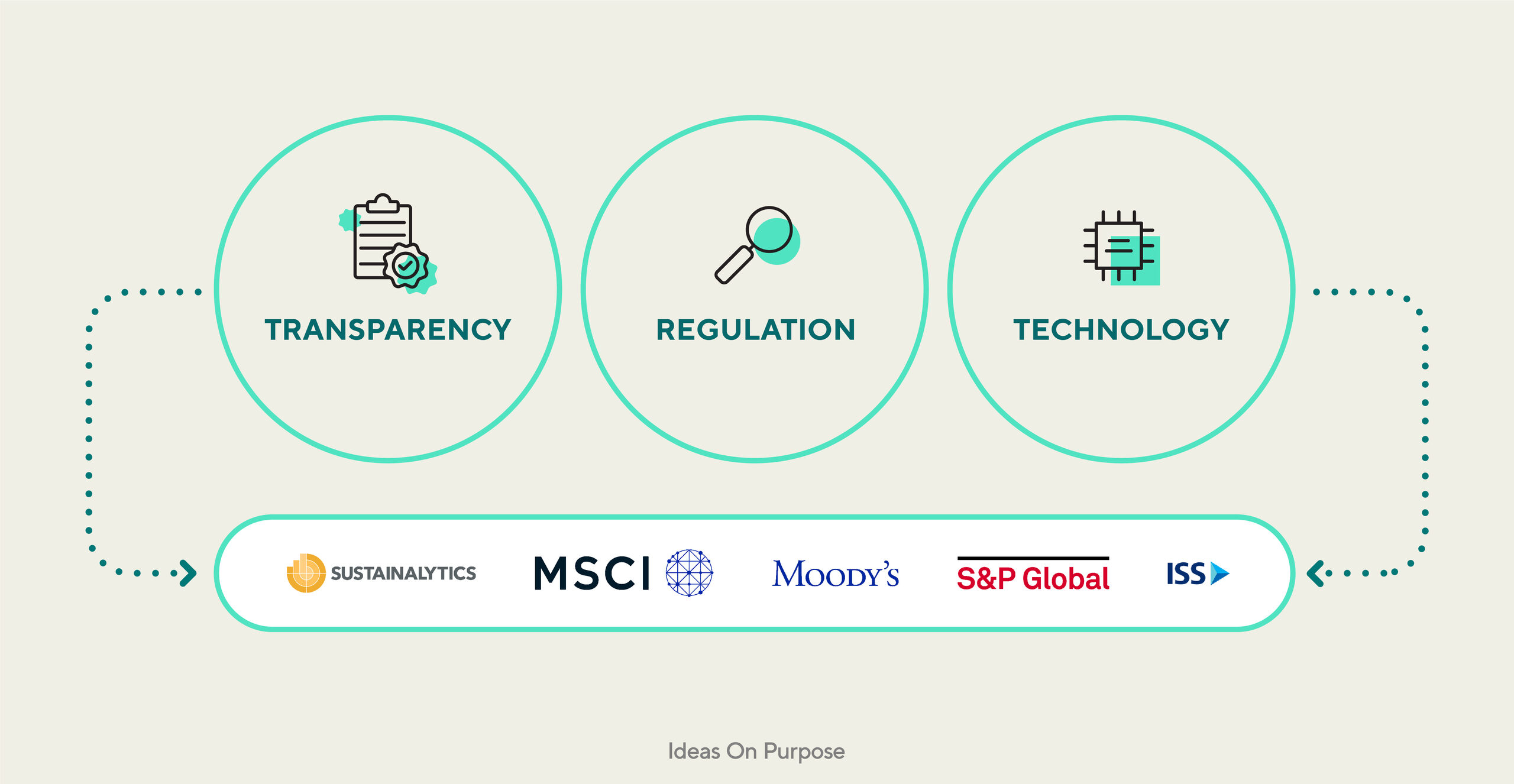The Shifting Landscape of Raters & Rankers: What’s Next?
Criticism of ESG ratings & ranker agencies is not new. As ESG has grown in popularity, gained support and attention, it has dually encountered reasonable doubt and criticism. And, at the end of 2023, what’s to come as regulation shifts for the forefront?
ESG ratings are created by both commercial and nonprofit organizations to assess how corporate commitments, performance, business models and structures align with sustainability goals. While they are foundational for investment firms in assessing companies and have real effect on financial markets, ratings are also used by other stakeholders—potential employees, partners, and customers—to better understand how a company interacts with and impacts the planet.
Despite the responsibility rating & ranker agencies hold, they’ve fallen short in areas that matter most to the companies that use them. The methodologies designed by these agencies are notoriously opaque, and while the agencies openly publish them, the methodologies aren’t easily understood by the companies that are being rated and ranked or investors who need them for analysis. More-so, the data behind the ratings is vast, covering hundreds of topics, and when companies don’t provide requested information, the agencies often fill in the gaps with assumptions provided by internal models they’ve built. Further, the lack of transparency complicates attempting to understand the objectives and incentives of each agency, again conflicting priorities for both the companies being rated and investors alike. The growing concerns and critiques are indeed valid. As the landscape continues to shift, here’s what we’re keeping an eye on to help our clients stay ahead of the curve:

Transparency of Data
To meet the growing demands of sustainable investing, there has been a proliferation of ESG ratings and rankers which has led to inconsistencies and lack of transparency. As such, there are also increasing calls from investors, regulators and other stakeholders for more standardization across ESG disclosures, transparency of methodologies from rater agencies, and regulated reporting to help accelerate these efforts. More transparency from raters and rankers would make data and information comparable, so results can be more easily understood, interpreted, and implemented. And similar to how ratings will become more reliable and useful with more regulation, more trust and accurate cross-comparing of efforts could come to the forefront with more rigor.
Regulation of Raters
Currently, rating agencies are unregulated, meaning their foundational methodologies go ungoverned. Due to the lack of oversight, there has been a substantial increase in rating platforms creating their own ratings. This proves challenging when looking for ESG accreditation due to the overall lack of reliability and transparency of ratings. This has previously led to a global discussion of creating regulations that focus on the transparency of ESG definitions, methodologies and the actions taken to reduce conflicts of interests within ESG rating agencies, but little has resulted and the frustrations have grown (e.g., anti-ESG!) Regulatory oversight is critical at a time when more companies are overselling their sustainability credentials and further perpetrates other issues (e.g., the greenwashing to greenhushing pendulum).
Integration of Technology
We’d be remiss to not include the adoption and integration of technology. We’ve previously covered how AI could help the future of sustainability communications, but through a similar lens technology, including AI and machine learning, could utilized to improve data collection, analysis and prediction capabilities of ESG rating agencies. However, this does pose a potential, significant issue around the interpretation of data if scoring methodologies are left inaccessible. And if left unchecked, this has the potential to create even more confusion around transparency, and ultimately, the overall efficacy of ratings.
The Takeaway
The landscape of raters & rankers is moving fast. As Harvard recently pointed out: scores may convey important insights into the nonfinancial impact of companies, significant shortcomings exist in their objectives, methodologies, and incentives which detract from the informativeness of their assessments. Companies should use scores against material topics that matter to their bottom line as a way to access where they are and identify areas of opportunities over time.
How Ideas On Purpose Can Help
For over 20 years IOP has been helping companies of all sizes with stakeholder-pleasing ESG strategy and sustainability reports and impact communications. Feel free to email us to get in touch if you need help with yours.
Photo by Jude Infantini on Unsplash